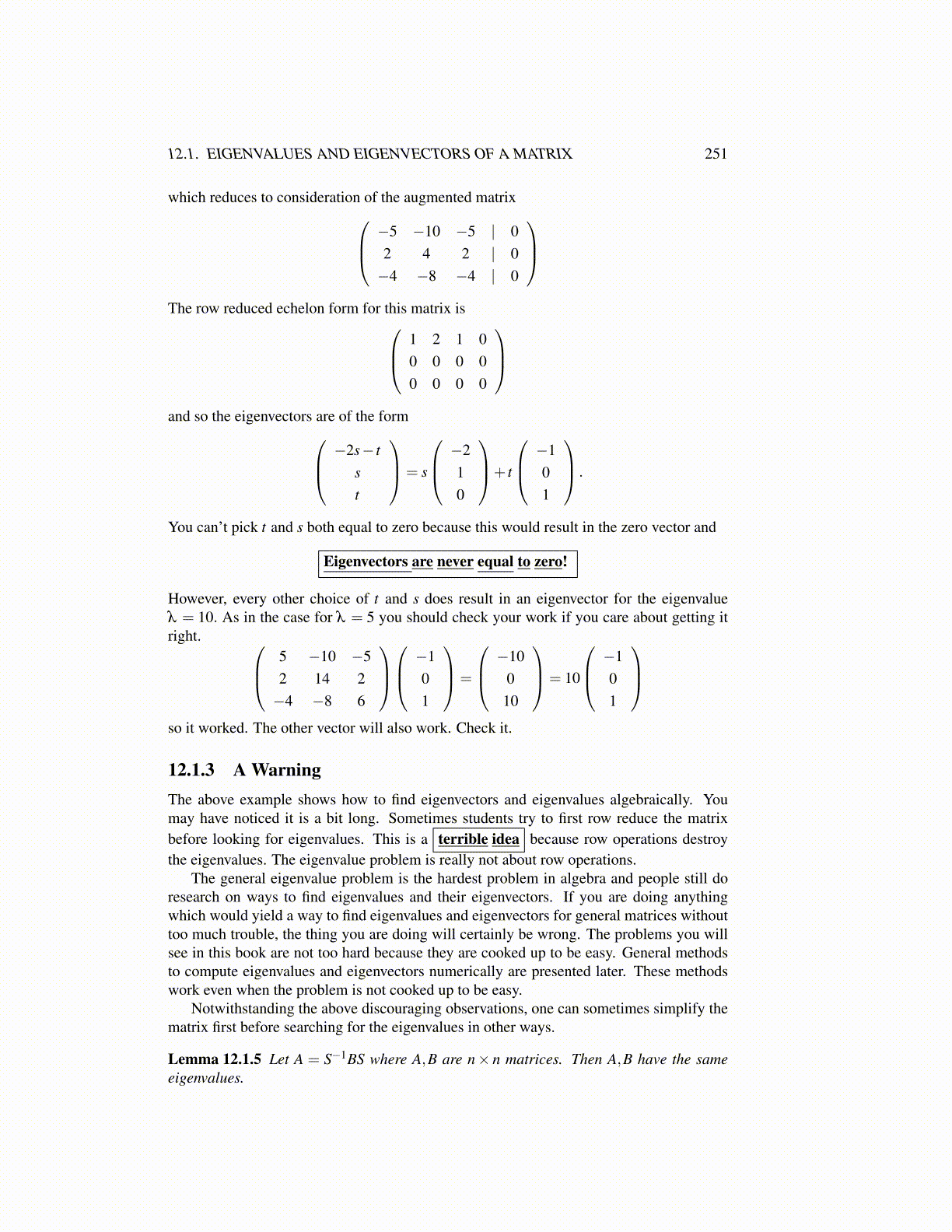
12.1. EIGENVALUES AND EIGENVECTORS OF A MATRIX 251
which reduces to consideration of the augmented matrix −5 −10 −5 | 02 4 2 | 0−4 −8 −4 | 0
The row reduced echelon form for this matrix is 1 2 1 0
0 0 0 00 0 0 0
and so the eigenvectors are of the form −2s− t
st
= s
−210
+ t
−101
.
You can’t pick t and s both equal to zero because this would result in the zero vector and
Eigenvectors are never equal to zero!
However, every other choice of t and s does result in an eigenvector for the eigenvalueλ = 10. As in the case for λ = 5 you should check your work if you care about getting itright. 5 −10 −5
2 14 2−4 −8 6
−1
01
=
−10010
= 10
−101
so it worked. The other vector will also work. Check it.
12.1.3 A WarningThe above example shows how to find eigenvectors and eigenvalues algebraically. Youmay have noticed it is a bit long. Sometimes students try to first row reduce the matrixbefore looking for eigenvalues. This is a terrible idea because row operations destroythe eigenvalues. The eigenvalue problem is really not about row operations.
The general eigenvalue problem is the hardest problem in algebra and people still doresearch on ways to find eigenvalues and their eigenvectors. If you are doing anythingwhich would yield a way to find eigenvalues and eigenvectors for general matrices withouttoo much trouble, the thing you are doing will certainly be wrong. The problems you willsee in this book are not too hard because they are cooked up to be easy. General methodsto compute eigenvalues and eigenvectors numerically are presented later. These methodswork even when the problem is not cooked up to be easy.
Notwithstanding the above discouraging observations, one can sometimes simplify thematrix first before searching for the eigenvalues in other ways.
Lemma 12.1.5 Let A = S−1BS where A,B are n× n matrices. Then A,B have the sameeigenvalues.